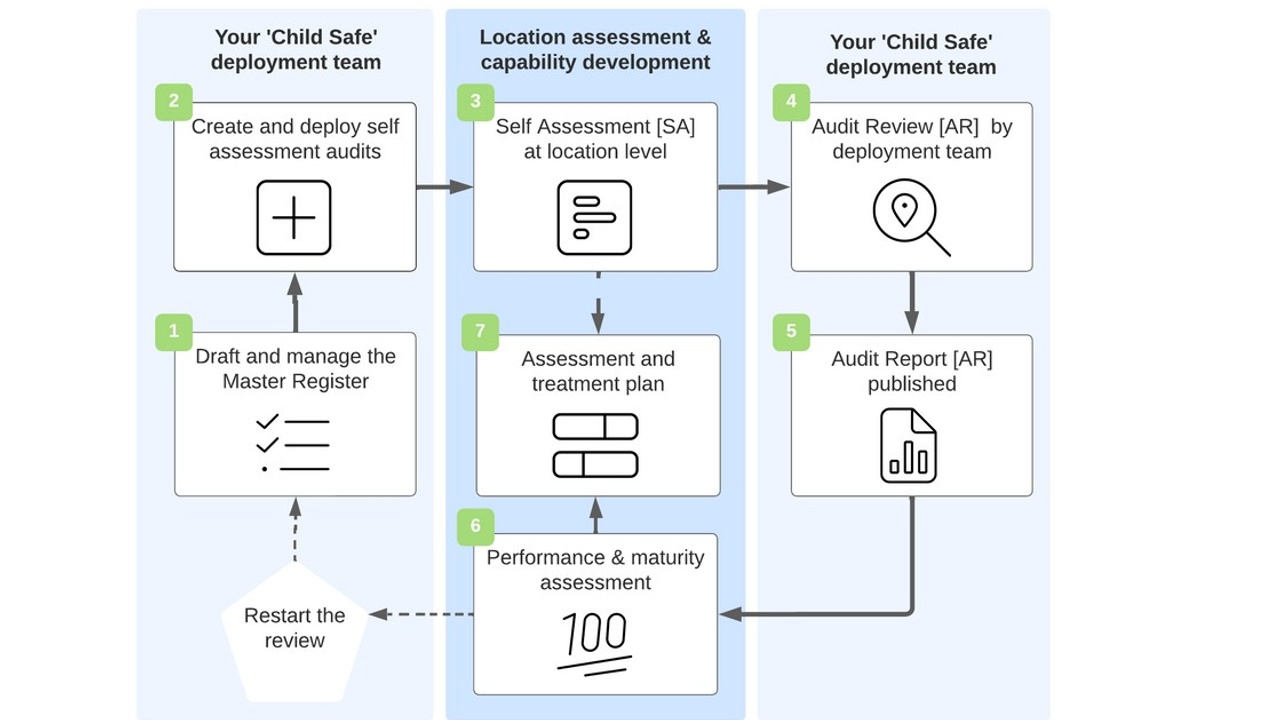Building your Child Safe Capabilities - our 7 Step System for Success
Jul 03, 2022
Safe Havens provides a risk based system to support boardrooms, executives, deployment teams and the front-line staff that need to be Child Safe compliant. Our 7 step system combines audit controls, capability development, risk assessments, related treatments, maturity and compliance reporting.
1) Draft and manage the master register of child-safe requirements. The deployment team [DT] to review the underlying requirements of what is a 'Child Safe' location and converts them into elements that are a) location relevant and b) operational [requirements in a short & long form, required evidence or uploads needed, and the deployment teams priority for each requirement.
2) Create and deploy requirements and self assessment audits by location. The deployment team [DT] makes a final review and sign off of the content in the master register. Following this, one or many locations are selected for assessment, and then a copy of the requirements is copied down for each location.
3) Each location to self assess [SA] their status. The location manager receives notification of the creation of new audit. At this time the location team can proceed with their self assessment and evidence needed. When the location audit team has answered all 'Expected' items they receive an option to sign off and finalise the audit. All audit content is available for export and review. The location manager can now sign off the Self Audit for there location.
4) Each audit is reviewed [AR] by the deployment team. When any location has signed off their Self Audit the deployment team, or other qualified experts can review, assess and comment on each of the the locations responses. These responses form the basis of formal report.
5) Publish, share & action the Audit Report [AR] findings with each location. When the deployment team has finalised and published the Audit Report the location team can review the responses and inform location based treatments, improvement plans & required workloads responsibilities.
6) Review performance & maturity progress. Visualising a locations Child safe capabilities in the context of maturity matrix assists in identifying progress, performance gaps and benching making against other locations. These visualisations assist front-line teams to review the relative progress and identify areas of non-conformance or elevated risk.
7) Prepare treatment plans and assign workloads. Front line teams review audit report content and maturity assessment to determine capability gaps and workloads to address treatment plans, and assigned work programs in readiness for the next review cycle.




